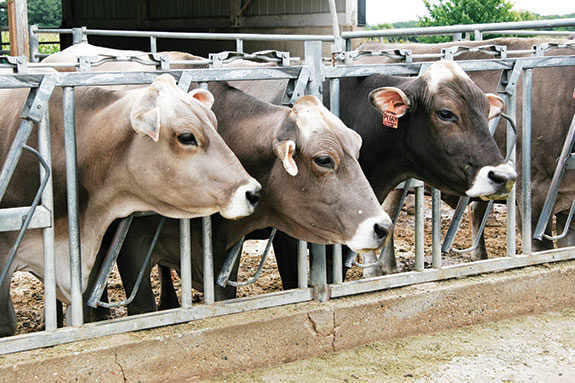Although other regions of Canada have been relatively less affected, many farmers are reporting low grain yield, which could reduce the volume and quality of silage.
A shortage of forage on-farm can cause fluctuations in the inclusion level of major components in the diet, ultimately influencing feed quality.
Forage represents the least expensive part of the diet and comprises 50 to 70 percent of the total mixed ration. Alfalfa hay and/or haylage are one of the principal protein sources to feed lactating dairy cows, but without the quantity available to producers this year, other protein sources must be considered.
Producers have long valued ruminants for their ability to transform fibrous plant materials and byproducts into high-quality milk and meat, but when it comes to utilization of dietary protein, the rumen is inefficient. With protein prices rising higher and higher, producers are analyzing the cost of wasteful usage and are looking for a more efficient feed.
In order to keep the rumen bacteria working efficiently, an effective source of ammonia-nitrogen (NH3-N) must be provided as a similar match to alfalfa haylage since it contains high levels of non-protein nitrogen (NPN).
Feeding less of this forage can lead to a dramatic reduction in the nitrogen supply to those species of ruminal bacteria responsible for degrading fibre in the rumen, and consequently a reduction of fibre digestibility could be observed.
Research has shown the bacteria in the rumen primarily uses NH3-N in the ruminal fluid for growth and are derived from the NPN in the rumen.
Feed-grade urea is one of the most common forms of additional NPN used in dairy cattle; however, elevated activity of urea in the rumen reduces the efficiency of utilization, leading to wasted energy and wasted time. In some cases, the extra urea can be toxic to the cow.
Vegetable proteins such as soybean meal (SBM) are available, but prices for these alternative proteins are flirting with the highest costs seen in the last five years.
Besides the higher cost, SBM can create an inconsistency in manure, and the bacteria in the rumen are forced to spend more energy in order to get NH3-N.
For some producers, a little space in the ration is all they need. A new tool in the form of slow-release non-protein nitrogen has challenged past ways of formulating a diet and is instead introducing a way to use on-farm feeds and give more flexibility in formulating.
This tool works as a sustained release of NH3-N in the rumen to better synchronize microbial growth, dramatically increasing the nitrogen efficiency in the lactating dairy cow. Consequently, a reduction in ammonia emission is detected from dairy operations.
A combination of effective protein sources in the rumen and post-ruminally – matching essential amino acids in the small intestine – has the potential to increase rumen efficiency considerably.
Ed Danen, owner of Danzel Holsteins Limited in Tavistock, Ontario, found an alternative to high protein costs. After a thorough trial in the summer, Danen implemented two new technologies in his herd.
The technologies Danen is using work in maximizing both rumen-degradable protein (RDP) and rumen-undegradable protein (RUP). To get the perfect balance, the bacteria in the rumen need ammonia to grow and break down fibre that will lead to increased milk production.
The attempt to synchronize ruminal carbohydrate and crude protein degradability in the rumen will increase microbial protein production and energy derived from rumen microbes.
But without synchronization between the nitrogen in the rumen and the nitrogen absorbed in the small intestines, the cow will lose its opportunity to increase milk yield and milk components.
Danen says by using the perfect balance of protein, he has improved his farm resources by using 85 milking cows instead of 90.
“We’ll stay on it through the year with the pricing (for protein) the way it is. (These technologies) help reduce feed costs,” says Danen. “It also reduced cow numbers for us since it increased milk yield. We are using fewer cows to fill the same quota, and that reduced the cost of production.” PD
Silvio Miranda has a doctorate of veterinary medicine (DVM) and a master’s of science (MSc) degree in animal nutrition. His primary focus at Alltech Ontario is on optimizing protein nutrition in dairy cattle and improving profitability and livestock health by using organic minerals.

- Silvio Miranda
- Technical Specialis
- Alltech Ontario










